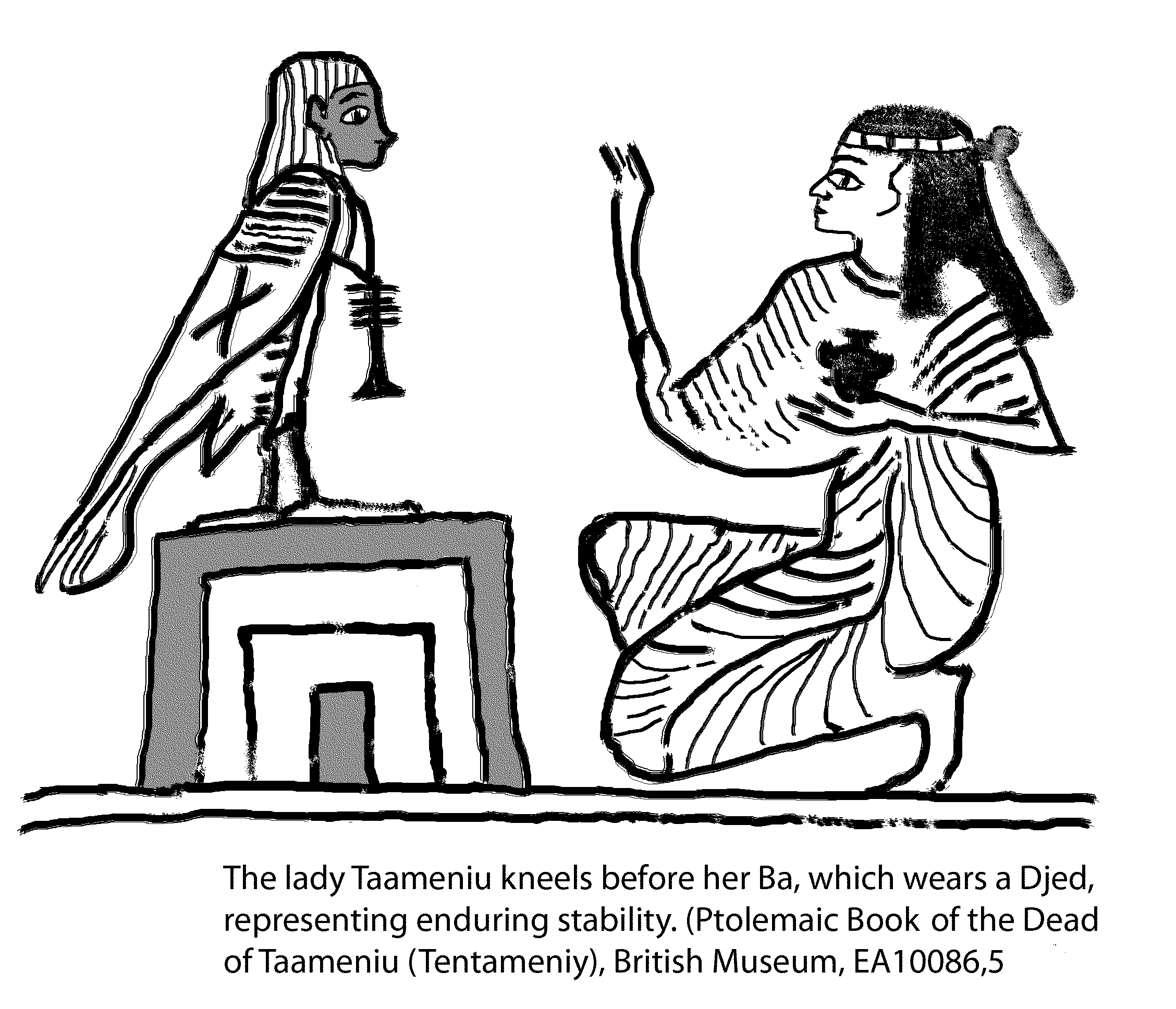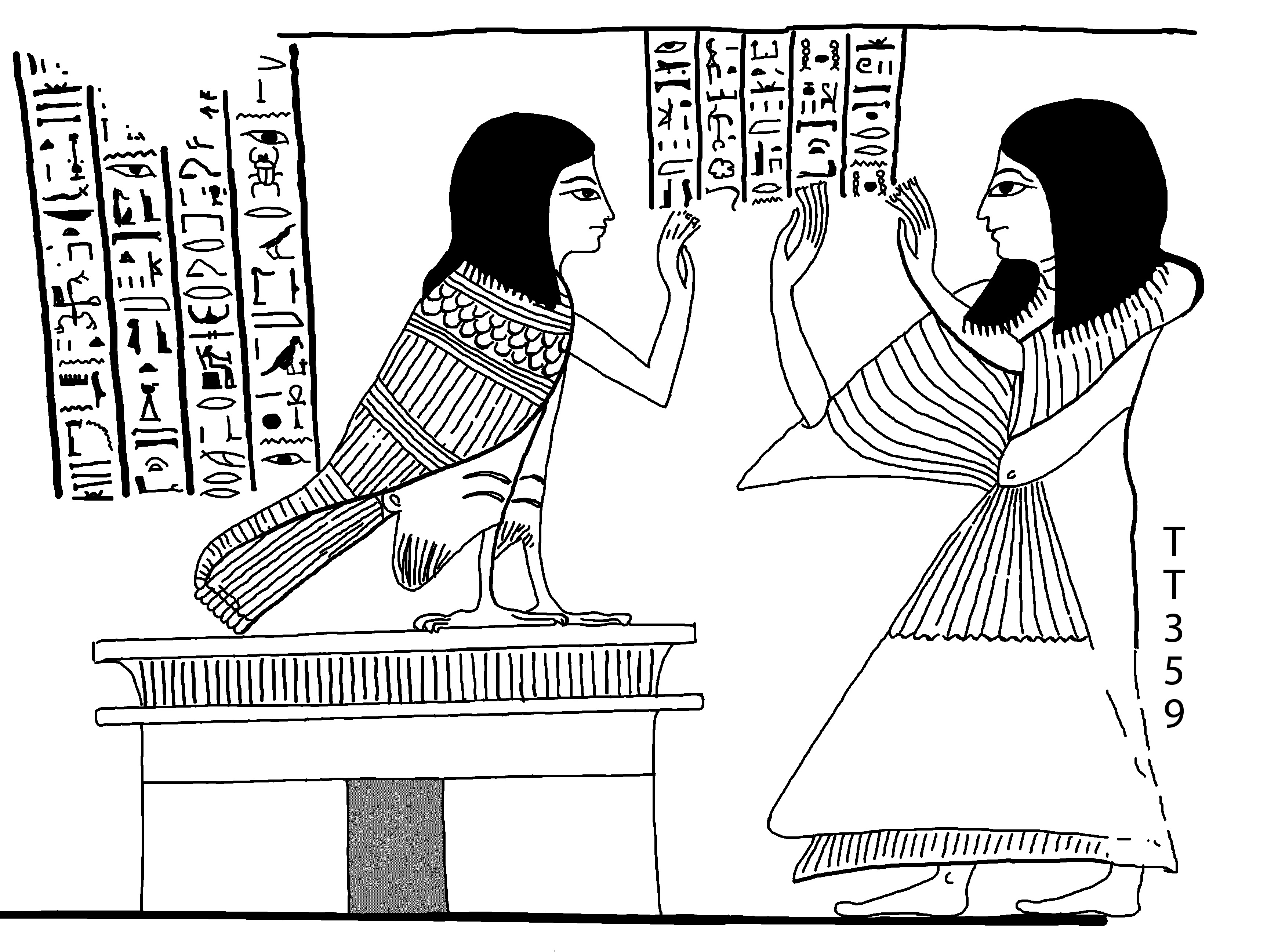|
April 4, 2015
Alison Roberts describes this: "Vignette from chapter 26 of the Book of the Dead, equaled with the ninth hour of the night. A chapter of the heart, it begins with the words 'May my heart be mine in the House of Hearts'/ Holding her heart, the lady Taameniu kneels before her Ba, which wears a Djed symbol of 'stability', symbolizing her stable existence..." (_My Heart My Mother: Death and Rebirth in Ancient Egypt_, by Alison Roberts (Northgate Publishers 2000),page 153) Wearing the Djed expresses her Ba's eternal nature. Inherkhau's tomb has a Ba-dua scene, too:
Kent Weeks explains:
A scene in the beautiful Abydos temple shows:
"Plate 40 shows Seti kneeling devoutly before Hathor, 'the female Hawk', who appears in the form of a human-headed Ba-bird. Between the king and the goddess are inscribed the words
Roberts explains, "the Ba represents above all the capacity to appear as a dynamic, living presence and emanate power affecting others." (page 52)
Could the scene of Seti positioned devoutly before Hathor as a Ba-bird have any similarity between the two scenes of Inherkhau and Taameniu in devotion before their own ba? We have seen the tranformative heka (magic), "my eyes ARE Hathor", which allows the one who has passed on to overcome the trials within the Duat (underworld). Perhaps his ba has become as Hathor. Or perhaps he's acknowledging Hathor as the maker of his Ba? With this creative possibility, She could thereby be able to give "charm and attraction", enabling Seti to better navigate the difficulties of the Duat.
We have seen here the Ba as eternal, dynamic and capable of emanating power. It is a characteristic of both gods and humans. Human Bas arise forth from Netjer, thus when awakened, humans need not feel isolation from the Divine.
Fiercely Bright One linked to
Ariadne's Axe post in which the writer gives advice on how to choose a patron, "When you find that god whose wish is your wish, then your hearts will be like one heart, and your mission will be one mission."
The post-Christian division of "'My will be done' vs 'Thy will be done'" is false when the religion comes from a heart joyfully attuned to Netjer. What makes the deity happy, makes you happy. There's no need of austere self-denial when the soul recognizes its Source. Recognizing our Ba's Divine origins allows us to channel the Divine blessings and strengths.
Dua Netjer!
|


